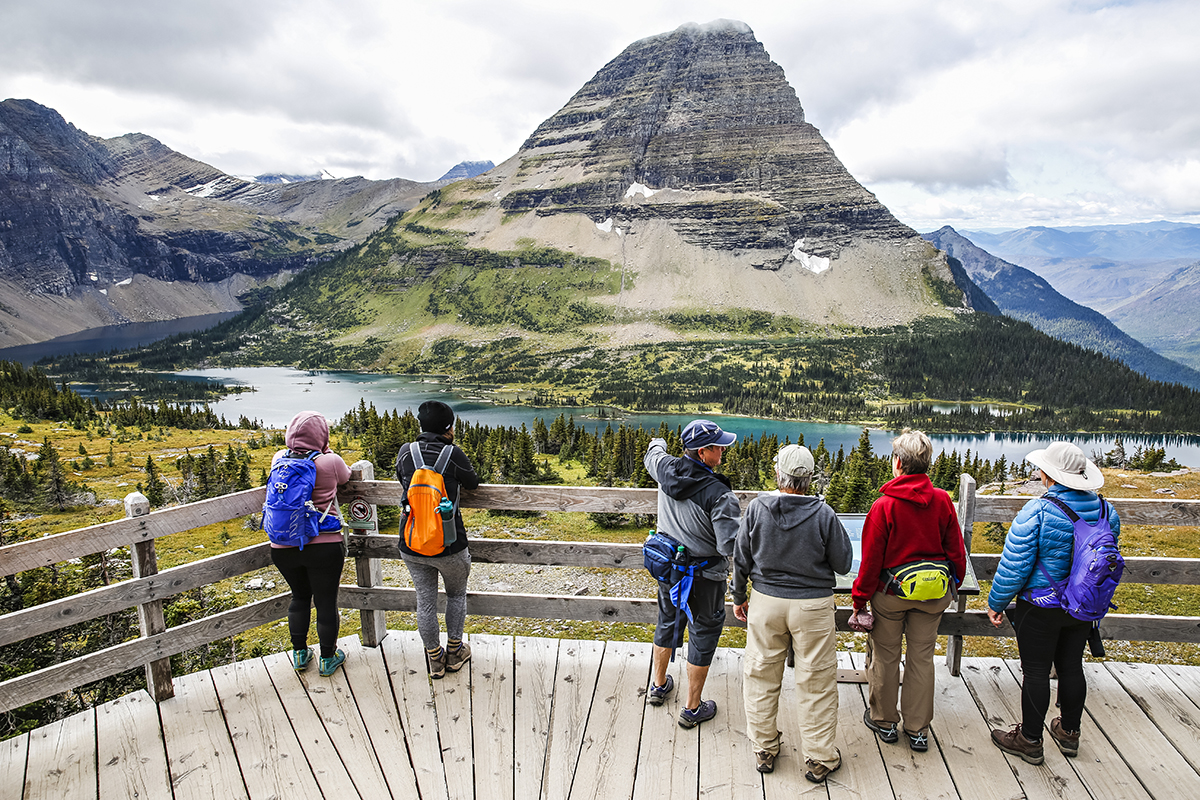
Planning a Trip to Glacier
Officials predict 2021 could be the busiest summer in the 111-year history of the park, so prepare to be patient, have some backups in mind and soak in the sights while you wait in line
The COVID-19 pandemic didn’t do much to dampen enthusiasm for Glacier National Park’s stunning views, abundant wildlife and pristine waters, even with portions of the park inaccessible throughout the summer and a mandatory shutdown that lopped off the early part of the season. If anything, Americans’ desire to flee crowded spaces drove more interest in Glacier and with the pandemic (hopefully) drifting into the past, officials are anticipating “record-breaking visitation” in 2021.
To combat the impending crowds, the park has taken the unprecedented step of introducing a ticketed entry system on Going-to-the-Sun Road, meaning that if you plan on traveling the scenic highway you’ll need a reservation ahead of time. Thankfully, if you miss out on a ticket or just want to avoid the heaviest congestion, it’s still possible to find ample space for a bike, hike, swim or float within the park’s 1 million spectacular acres.
Get started on your trip by checking out our tips below, including a word of warning on a major road construction project that’s probably going to make just getting to the park even more of a challenge.
When to Visit
Summer remains the best time to check out Glacier, with the long days leaving ample opportunities to get out and explore before the sun goes down, but they’re also the busiest of the year, especially in June and July. Weekends tend to be a bit busier than during the week, and the best chance you have to get to where you want to go is to show up early. Even if you have a ticket to drive on Going-to-the-Sun Road, a parking spot isn’t guaranteed, and in recent years the busiest lots fill before 8 a.m. If you’re a real early bird — or are willing to stay up late — you can access Going-to-the-Sun Road before 6 a.m. without a securing a ticket.
Where to Go
Glacier’s most famous hikes are truly epic but you won’t find much solitude in places like Avalanche Lake or the Highline Trail, something that’s generally the case for any excursion departing from a trailhead off Going-to-the-Sun Road. You could head east to the Many Glacier area for can’t miss hikes like Grinnell Glacier and Cracker Lake, but be prepared for some rough roads and a long day of travel, since Many Glacier is a two-hour drive from the popular west entrance.
Navigating the Roads
The reservation system should make the roads a little clearer — provided you have a ticket — although construction projects are still planned inside the park at various times on Camas Road, Inside North Fork Road and Many Glacier Road, among others. But the major road construction project this year is happening outside the park, with an extensive road rehab scheduled for U.S. Highway 2 between Hungry Horse and Essex that could snarl traffic for visitors approaching from the Flathead Valley. Officials say you should expect delays of about 15 minutes between Hungry Horse and West Glacier, and a 45-minute backup from West Glacier to Stanton Creek.
More information on construction projects inside the park and the latest road and parking lot status can be found at nps.gov/glac.
Boat Check Stations
To protect its sparkling lakes, rivers and streams, all watercraft must be inspected for aquatic invasive species before hitting the water in Montana. That’s no different inside Glacier, where you’ll have to stop at a check station to get cleared for launch. Invasive mussels have presented the biggest threat since they were first discovered in the state in 2016 and, at least so far, they’ve been kept at bay thanks to the vigilance of inspectors and boaters. All watercraft — motorized and non-motorized, including canoes, kayaks and float tubes — are required to stop and get checked. Boats must be clean, drained and dry prior to inspection.
Have a Backup Plan
Nature is unpredictable and Glacier Park, of course, is a whole lot of nature. Best laid plans can be scrapped by anything from inclement weather to wayward grizzlies, so hitting the road with plans A, B and C already solidified is a great start, and don’t forget to look at hikes just outside the park’s boundaries. And make sure to do your planning before you get to the park, because while guides and friendly park rangers both make for great resources, you’re not likely to get much cell phone signal as you approach the park.